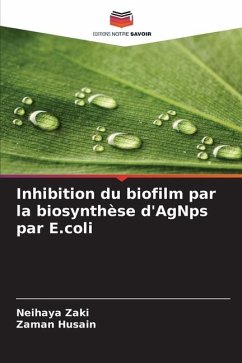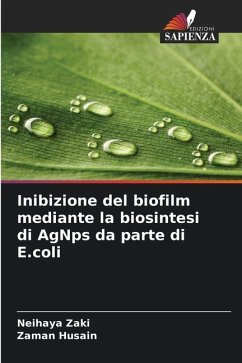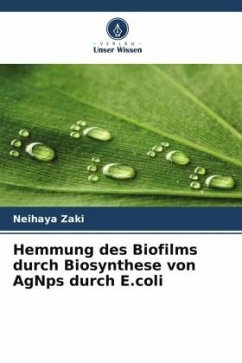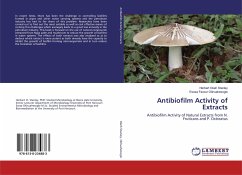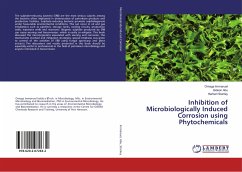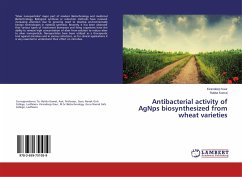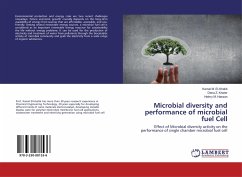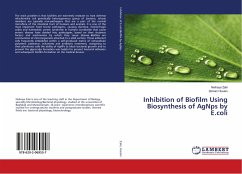
Inhibition of Biofilm Using Biosynthesis of AgNps by E.coli
Versandkostenfrei!
Versandfertig in 6-10 Tagen
41,99 €
inkl. MwSt.

PAYBACK Punkte
21 °P sammeln!
The main problem is that biofilms are extremely resistant to host defense mEscherichia coli genetically heterogeneous group of bacteria, whose members are typically non-pathogens that are a part of the normal microflora of the intestinal tract of humans and animals. It is one of the most important food borne pathogens, causing diarrhea, hemorrhagic colitis and haemolytic uremic syndrome in humans worldwide that cause enteric disease have divided into pathotypes, based on their virulence factors and mechanisms by which they cause disease. Biofilms are communities of microorganisms attached to a...
The main problem is that biofilms are extremely resistant to host defense mEscherichia coli genetically heterogeneous group of bacteria, whose members are typically non-pathogens that are a part of the normal microflora of the intestinal tract of humans and animals. It is one of the most important food borne pathogens, causing diarrhea, hemorrhagic colitis and haemolytic uremic syndrome in humans worldwide that cause enteric disease have divided into pathotypes, based on their virulence factors and mechanisms by which they cause disease. Biofilms are communities of microorganisms attached to a solid surface. These adherent cells frequently embedded within a self-produced matrix of extracellular polymeric substance, echanisms and antibiotic treatment, comparing to their planktonic cells the ability of AgNPs to block bacterial growth and to prevent the glycocalyx formation was helpful to prevent bacterial adhesion and subsequent biofilm formation on the medical devices.



